Developing Disability Dance in South Korea
An Interview with Young Mook Choi and Nanyoung Sim of Light Sound Friends
BY EMMALY WIEDERHOLT
Light Sound Friends is an organization in South Korea that supports dancers with disabilities. Founded by Young Mook Choi, Light Sound Friends has several components: a performance company, the Korea International Accessible Dance Festival (KIADA), and Mix Abled Dance Education (MADE). Here, Mr. Choi and his assistant, Nanyoung Sim, share more about how Light Sound Friends and its myriad components are organized, and how they are working to change the landscape of disability dance in South Korea.
This interview was translated with help from Nanyoung Sim.
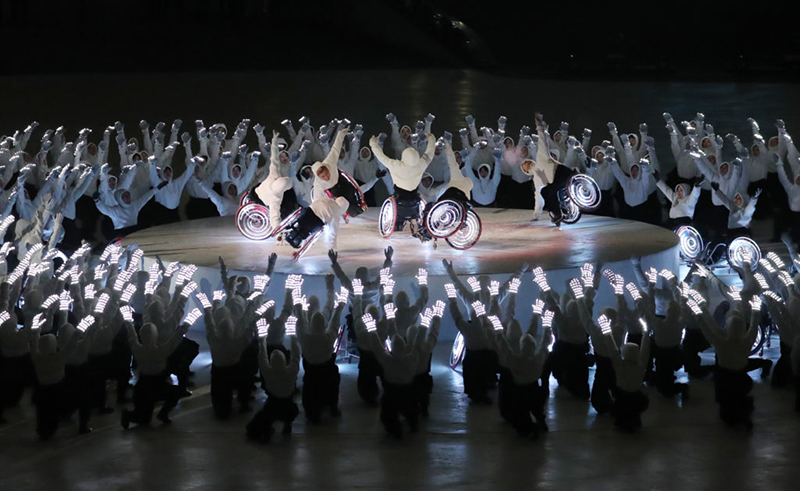
Light Sound Friends performing at the 2018 Paralympic Opening Ceremony, Photo courtesy Light Sound Friends
~~
Can you tell me a little about your history and how Light Sound Friends got started?
Mr. Choi: I majored in Theology in graduate school, not dance. I studied Social Welfare as a pastor in college. I worked with and supported people outside the mainstream. I made a group to support disabled people through the arts. It was mainly based in music at first, and then there was a dance and visual arts group that worked together. That group was named Light Sound Friends. It started in 1996 and was all-volunteer until it was incorporated in 2006.
How did Light Sounds Friends end up focusing on dance?
Mr. Choi: I noticed that with the arts, disabled people could watch, but couldn’t participate. I wanted to give them the opportunity not only to watch, but to actually do the art. Dance is the hardest for people with disabilities to do, so I thought it would be the richest and most powerful way to give opportunity to people with disabilities. Our work focuses on dance right now, but the arts are all connected; we can’t move without the music.
Can you share more about the Korea International Accessible Dance Festival (KIADA)? How long has it been running and how many groups usually participate?
Mr. Choi: Before KIADA started, Light Sounds Friends had a performance each year, but it wasn’t international. At the time, the performances presented different forms of dance, like ballet, modern dance, and Korean traditional dance performed by dancers with and without disabilities together. Although the level wasn’t quite professional for the first time, it developed as we kept performing every year. In 2012, it was a very important moment for us to participate in the Asia Pacific Disability Forum Culture and Arts Festival. After we had a good experience during the festival and had an opportunity to perform in Japan, I realized we needed to build up the network more outside of Korea. A group from Finland came in 2015 as a guest for our performance. I got the idea to connect with other countries and show groups internationally. KIADA started in 2016, and this past year was our sixth festival. This year there were 15 groups from six countries, and they all had dancers with disabilities.
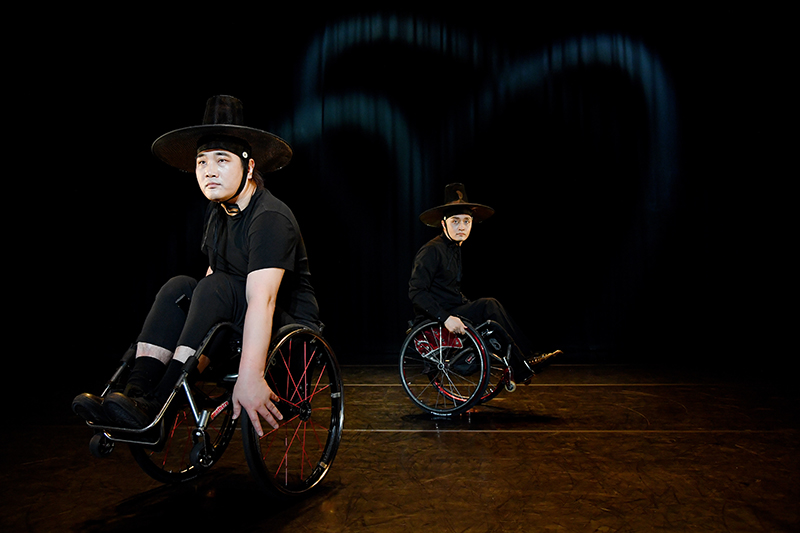
KIADA, 2020, Photo courtesy Light Sound Friends
Can you share more about Mix Abled Dance Education (MADE)? How do you teach people with disabilities ballet, contemporary, and Korean dance?
Mr. Choi: There was no system for disabled people to learn dance in Korea. After I started the international festival, I created the MADE academy in 2017. MADE is a system to provide dance classes for disabled people.
I made relationships in the dance field in Korea and, starting in 2009, instructors gathered and learned together how to provide education for disabled dancers. After I made the connections in Finland and started KIADA, I tried to invite people from different countries in order to learn what they did in their countries. In 2017, we finally created an education system, MADE.
Light Sound Friends originally started with Korean traditional dance and modern dance. People who use wheelchairs would use their upper bodies to dance. But they couldn’t do the steps, so the instructors would make a variation.
Nanyoung: The most important point of Korean dance is the line. Our dancers can show the beauty of Korean traditional dance using their upper bodies. We use the materials for the specific dance, like fans and small drums, even if our dancers can’t do the specific steps of Korean traditional dance. That way the dances are recognizable.
MADE teaches three different forms of dance – ballet, modern, and Korean traditional dance – and we try to find instructors in each genre every year. The disabled dancers audition every year so we know their level and can recommend what level and genre of dance they would participate in best. We have beginner, intermediate, and advanced levels.
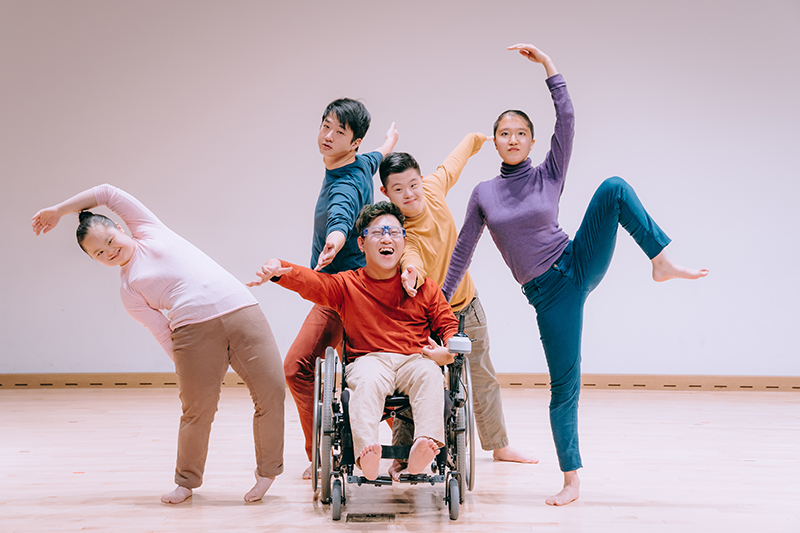
MADE dancers, 2019, Photo courtesy Light Sound Friends
This past year, we chose some talented young kids who have trained with us and we’re giving them more opportunity to be onstage. This group is called Shining Kids. Also, we have another group in MADE named Angel Eyes which is participating in the research program for development of barrier free technology for the creation and collaboration of choreography for dancers with auditory/visual impairment.
We support all different kinds of disabilities. After some people are trained as professional dancers by MADE, we encourage them to go forward to be individual artists groups. Viva Deaf Dance Company is a group that we made an independent company from MADE.
Light Sound Friends also has a performance company. Is there a specific performance you want to share more about?
Nanyoung: Light Sounds Friends performed in the 2018 Paralympic Opening Ceremony. It was an honor. The people who planned the Paralympic ceremony asked us to come up with ideas. The theme was Gong-Zone (coexistence). Our dancers participated in the opening ceremony. It was a big circle with many people in it. The wheelchair users who were not dancers like rugby players were also part of the circle as well as performers trained by Light Sound Friends.
Another performance we participated in was the Escena Mobile Competition in Seville, Spain, in 2019. We won the competition. It was a modern dance duet named An Old House that had dancers who were also in the Paralympic Opening Ceremony.
The last performance I want to share is based on traditional Korean dance. We performed it on December 15th. We did the premiere performance last October, and we keep developing it to make it our signature performance. The name of the piece is Pumba, Ya which is a Korean name meaning a person who walks and begs around the market or on the street.
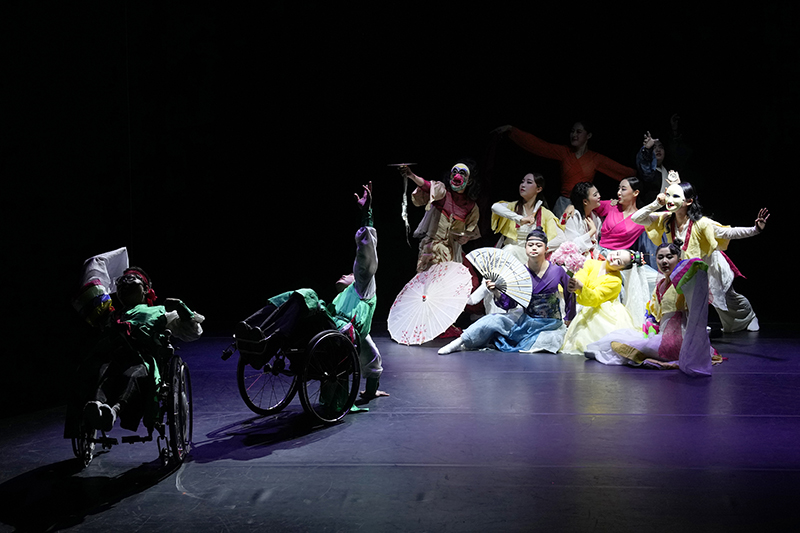
Light Sound Friends performing “Pumba, Ya” in 2021, Photo courtesy Light Sound Friends
How have these programs impacted the disability community in South Korea? Is there more awareness and opportunities for people with disabilities?
Nanyoung: Before MADE, there was no system for disability dance in Korean society. We really show the public that disabled people can move, they can dance. When people watch our performance, they don’t see disabled people, they just enjoy the performance. It’s a very important point. Especially in Korea, it’s very hard to change people’s mind. As our dancers are trained to be part of the arts, they can be proud of themselves.
Mr. Choi: We have an office nearby a public library and community center with programs for the disabled. Compared to their programs, Light Sound Friends provides programs that develop ability in the arts and inspires others. As we grew our programs, I tried to find instructors from national dance companies. Sometimes an instructor from a company comes to us and gives workshops. We really try to make our programs at an advanced level.
What’s next for Light Sound Friends? Do you have an upcoming project or focus you’d like to share more about?
Nanyoung: As a performance group and education group, we are continuing to develop. We are developing another program, MAAV, which stands for Mix Abled Art Village. We’re trying to make a village or town for disabled artists so they have a chance to have jobs and be part of a society. We try to give them opportunities to be trained and be part of a community. We are making a plan and looking at a spot near Seoul, hopefully in five years it will happen. These days, the Korean government is giving more financial support to the disabled to give them job opportunities in this society. They are trying to support art for people with disabilities.
~~
To learn more about Light Sound Friends, visit lsf.kr, and to learn more about KIADA (the Korea International Accessible Dance Festival) visit kiada.co.kr.
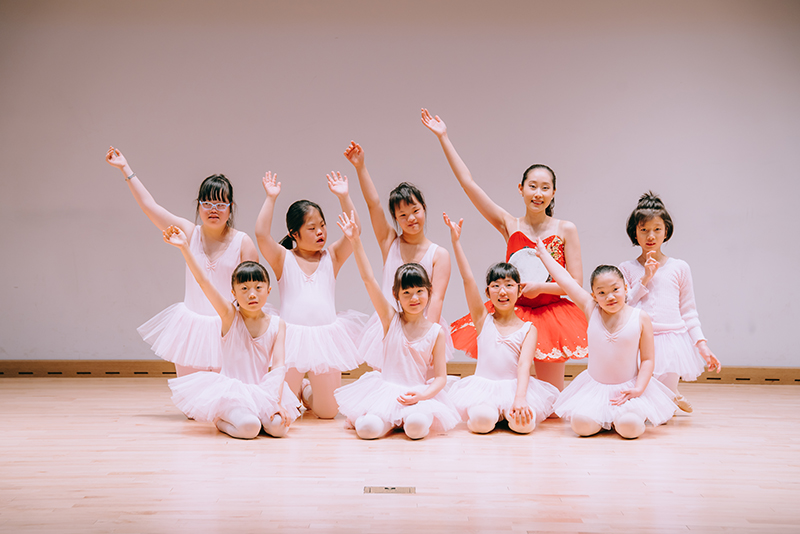
MADE dancers, 2019, Photo courtesy Light Sound Friends
